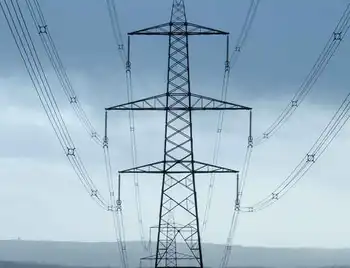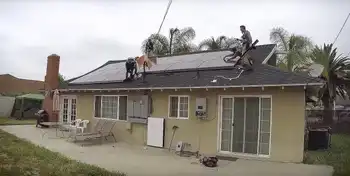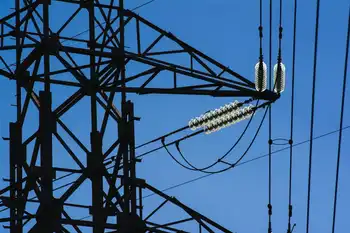Task: Stormproof power lines. Cost: Big zap to utilities' coffers
TAMPA BAY, FLORIDA - After being slammed by eight hurricanes in the past two years, Florida residents are angry about sitting in the dark.
It has prompted legislators and regulators to ask tough questions about how the state's power system can be "hurricane proofed."
Utilities are being put on the hot seat to find answers - especially with predictions of very active hurricane seasons for this year and beyond. Possible solutions include trimming trees more, erecting stronger poles and burying power equipment.
All of that might come with a hefty price tag - possibly tens of billions of dollars - that many consumers wouldn't be willing to pay.
The Florida Public Service Commission ordered the state's largest utilities - Florida Power & Light Co., Progress Energy Florida Inc. and Tampa Electric Co. - to submit reports by Monday recommending short-term and long-range solutions and estimating the effectiveness and the costs.
Florida's legislators are getting involved too, reviving a bill that failed in the past legislative session.
The proposed legislation - written by state Sen. Ron Klein, D- Delray Beach, and pushed by state Sen. Dave Aronberg, D-Greenacres - would create a task force to study the cost of burying distribution and transmission power lines across the state.
"Am I in favor of it?" asked Aronberg, who plans to introduce the bill in March along with Klein. "Yes, if it's cost-effective."
How much it will cost to put power lines and equipment underground is a big question that will take some time to answer, Aronberg said. It remains an important issue in Florida, where the hurricanes of 2004 and 2005 knocked out power to about 10 million electric customers, some for days and others for weeks.
In the interim, Progress Energy Florida has boosted its spending 36 percent to $19 million this year to cut more limbs from trees in the 35 counties - including Pinellas, Pasco, Polk, Hernando and Citrus - where it delivers power.
Tampa Electric officials responsible for tree-trimming have asked for company approval of a budget of $11.5 million this year, a 92 percent increase from 2005.
Studies after the 2004 hurricanes showed most of the outages were caused by trees, either being blown into power lines or toppling onto and dragging down power lines.
Tree-trimming "really has come under focus since our last round of storms," said Cherie Jacobs, a spokeswoman for St. Petersburg- based Progress Energy Florida. "It raised awareness for a lot of customers."
The company trims trees in a three-year cycle, she said. This year, Progress Energy Florida has included a public education program to help customers understand how electric reliability is affected by trees.
Tampa Electric plans to add people to reach more trees before and during the hurricane season, said Scott Smith, Tampa Electric's manager of system reliability.
"We really believe that we can do a better job," Smith said.
One suggestion the utilities have for regulators and legislators is that power companies be allowed to clear trees that are near power line rights of way. That would eliminate more trees or branches that could disrupt power to customers' homes and businesses.
Although trimming trees might help keep the lights on during and after a hurricane, the long-term solution some public officials and customers are calling for is placing electric equipment underground.
Utility officials say it is more likely customers will keep power when electric lines are buried, instead of being placed overhead. The downside is that when power does go out with underground lines, the lights will be out longer because it can be more difficult to determine the cause of the outage.
The first stumbling block is cost.
Progress Energy Florida has 38 percent of its neighborhood power equipment underground, said C.J. Drake, a Progress Energy Florida spokesman.
About 25 percent of Tampa Electric's is buried, said Paul Davis, director of Tampa Electric's energy control center.
Both utilities build most of its equipment underground in new neighborhoods. That is about five to 10 times the cost of setting poles and stringing wires and equipment overhead, Davis said.
If regulators and politicians require existing lines to be buried, it could significantly increase the cost of electricity, utility officials said.
Cost would rise because the utilities would have to dig up roads or people's homes might be in the way.
"Now, when you go back and retrofit where you have an overhead and you have to go back and put it underground, it can typically cost even more than that," Davis said.
"We really believe that we can do a better job."
Related News

Ontario introduces new fixed COVID-19 hydro rate
TORONTO - Ontario residents will now have to pay a fixed electricity price that is higher than the off-peak hydro rate, which people in the province have been allowed to pay so far due to the pandemic.
The announcement, which was made in a news release on Saturday, comes after the Ontario government suspended the normal “time-of-use” billing system on March 24.
The government moved all customers onto the lowest winter rate in response to the pandemic as emergency measures meant more people would be at home during the middle of the day when electricity costs are the highest.
Now, the government has…




